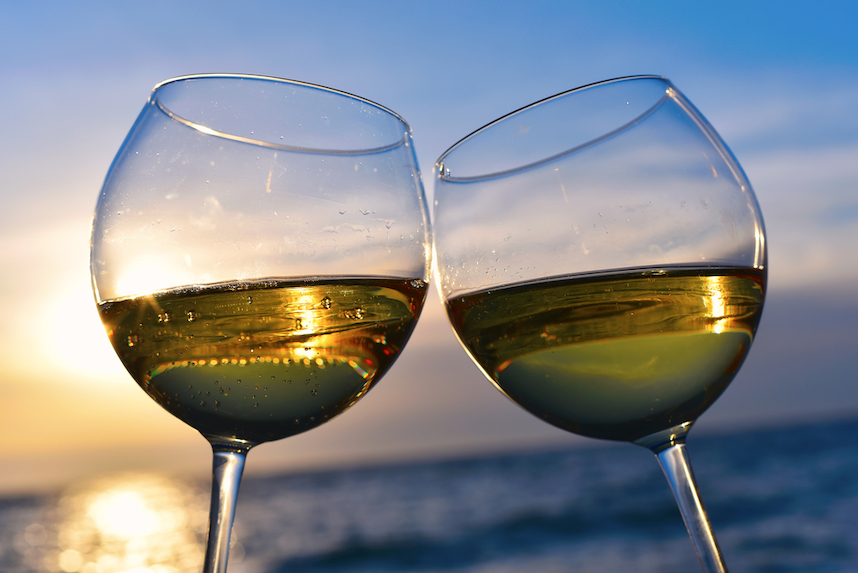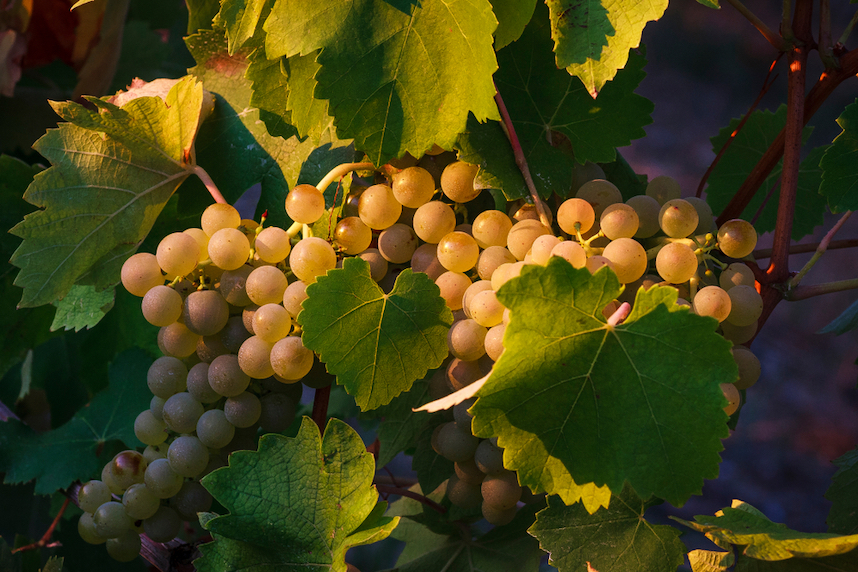Verdicchio wine comes from the homonymous white grape variety that is native to the Marche region of central Italy. The wine is appreciated by critics all over the world, and some have even called it one of the best Italian white wines.
History and origins of Verdicchio vine
As mentioned earlier, the Verdicchio vine is native to the Marche region: although some studies have shown it is similar to the Trebbiano vine and is assumed to have been imported from the Veneto region, it is in the Marche that it best expresses all of its characteristics.
Verdicchio wine has undergone periods of growth and crisis, overcoming them and establishing itself as the great wine we know today. It was not fully valued at first: quantity was preferred to quality, in part due to growing demand, both in Italy and abroad.
In the 50s there was a contest to decide the most original bottle shape for Verdicchio wine; the winner was a bottle in the shape of an amphora, which rendered the wine recognizable and famous even abroad. Unfortunately, as a result of high demand, the wine underwent a serious decline in the 1960s. Eventually the winemakers decided to resume the production of quality Verdicchio through careful selection of grapes and careful vinification. Verdicchio obtained the DOC (Denomination of Controlled Origin), the Italian classification of quality wines in 1968.
Verdicchio: Production areas and types
Italian wine classifications are regulated by production laws designed to protect the quality of the wine and to ensure its continuity. To obtain the Denomination of Controlled Origin, the Verdicchio must be cultivated in specific areas, with certain pedoclimatic characteristics that give the vine its defining features.
Verdicchio has obtained two DOC certifications, one for Verdicchio dei Castelli di Jesi and one for Verdicchio di Matelica, respectively cultivated in the province of Ancona and in the province of Macerata.
Verdicchio is certainly among the Italian white wines that are the most versatile and the most predisposed to aging. Verdicchio can be vinified as sparkling wine, still white wine, passito, and a DOCG reserve version, like the award-winning Salmariano, for those who love intense wines.
The most famous type of Verdicchio, which also has the most hectares dedicated to its cultivation, is the Castelli di Jesi. The land allocated to the cultivation of Verdicchio di Matelica is certainly less extensive. However, what determines the organoleptic difference between the two types of wine is that the former (the "Querciantica" Verdicchio dei Castelli di Jesi Classico 2020, for example) is influenced by the climate and its position close to the sea, while the latter type is a more structured mountain wine.
Verdicchio: Organoleptic characteristics

Verdicchio is a vine that is closely linked to its territory. Thanks to its versatile dynamism and the different types of wines to which it gives rise, it has a vast organoleptic range. Depending on the method of aging – steel, wooden barrels or cement tanks – the wines will return different organoleptic characteristics.
Verdicchio’s distinctive features are definitely complexity and olfactory intensity. In the case of fresh and young wines, Verdicchio will be characterized by notes of fruit and fresh flowers, while further maturation produces scents of wilted flowers and fruit jams. Moreover, if aged in wooden barrels, the aromas will become more spicy. However, a distinctive note that unites all types of Verdicchio is the scent and flavour of almonds.
At sight, the young Verdicchio will present itself as straw yellow with greenish reflections; with aging it will take on increasingly golden reflections. In regard to taste, Verdicchio is characterized by remarkable structure and acidity and therefore requires a significant alcohol content for good balance. The Verdicchio is a fresh, dry wine, except in the passito version when it becomes a sweet wine.
Verdicchio at the table: Which are the best pairings?
To better enjoy Verdicchio wine, a dry version should be served at a temperature of 10-12ºC, a sparkling version at 6-8ºC, and a sweet version at 8-10ºC.
Dry Verdicchio wine is best paired with a fish menu or enjoyed as an aperitif. The Reserve version goes well with white meats. The sweet and meditation versions can be enjoyed alone or winningly paired with blue cheeses, desserts and small pastries.
Now that you know everything about Verdicchio, why not try to grasp the nuances and the different aromas and flavours of one of the most important Italian white wines for yourself? Choose your favourite Verdicchio among the labels selected by the experts at Svinando!

